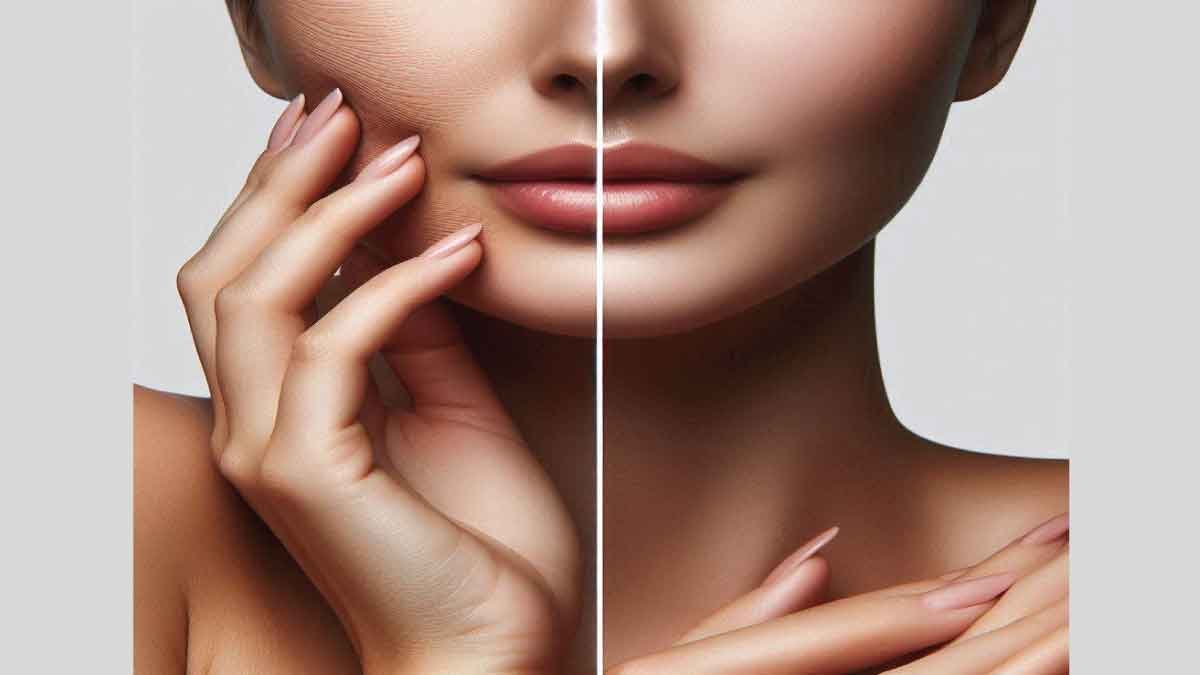Scrubbing on face is an essential step in any skincare routine, as it plays a crucial role in promoting skin health and radiance. By effectively exfoliating the skin, scrubbing helps to remove dead skin cells, prevent clogged pores, and stimulate blood circulation, resulting in a smoother and more luminous complexion. However, it’s essential to approach scrubbing with caution to avoid causing irritation or damage to the skin. Therefore, understanding the proper techniques and selecting the right products suited to your skin type are paramount. In this comprehensive guide, we’ll delve into seven easy to follow tips for scrubbing your face effectively, empowering you to achieve flawless skin and unlock your natural glow.
7 Easy Tips for Effective Face Scrubbing

Choose the Right Scrub
Selecting the right scrub is the cornerstone of successful face scrubbing. With a plethora of exfoliating products available, it’s essential to choose one that caters to your skin type and concerns. Exfoliating scrubs come in various forms, offering different benefits. Physical exfoliants contain granules or beads that manually remove dead skin cells, while chemical exfoliants contain ingredients like alpha hydroxy acids (AHAs) or beta hydroxy acids (BHAs) to dissolve them. For individuals with sensitive skin, opting for gentle formulations with finer particles can help avoid irritation and redness, ensuring a comfortable exfoliation experience.
Know Your Skin Type
Understanding your skin type is paramount when embarking on a journey of exfoliation. Dry or sensitive skin tends to be more delicate and may require a milder exfoliant to prevent irritation. Moreover, less frequent scrubbing is advisable to maintain skin health and integrity. Conversely, oily or acne-prone skin can benefit from more frequent exfoliation to unclog pores and prevent breakouts. However, it’s essential to strike a balance and avoid over-exfoliating, which can exacerbate issues and compromise the skin’s natural barrier. For those with combination skin, which may exhibit characteristics of both oily and dry skin, adopting tailored approaches for different areas of the face can help achieve balance and clarity.
Gentle Application Technique
The application technique plays a crucial role in the effectiveness and safety of face scrubbing. Aggressive scrubbing motions can damage the skin’s protective barrier, leading to redness, inflammation, and even micro-tears in the skin. To avoid such consequences, it’s recommended to use gentle, circular motions with your fingertips when massaging the scrub into your skin. This approach helps evenly distribute the product while minimizing potential irritation. Areas prone to dryness or congestion, such as the T-zone or chin, should receive extra attention, but excessive pressure should be avoided to maintain skin health.
Don’t Overdo It
While regular exfoliation is beneficial for promoting skin renewal and maintaining a radiant complexion, overdoing it can have detrimental effects. Over-exfoliating can strip the skin of its natural oils, leading to dryness, irritation, and even more breakouts. To prevent such issues, it’s crucial to adhere to a balanced exfoliation routine. Limiting scrubbing to two to three times a week, depending on your skin type and the product’s instructions, is generally recommended. Additionally, if any signs of irritation, such as redness or stinging, occur, it’s advisable to scale back on the frequency or switch to a gentler scrub to protect the skin’s integrity.
In a result, achieving flawless skin through scrubbing requires thoughtful consideration of product selection, skin type, application technique, and frequency. By choosing the right scrub for your skin’s needs, understanding your skin type, using a gentle application technique, and avoiding over-exfoliation, you can effectively remove dead skin cells, unclog pores, and reveal a fresh, glowing complexion. Remember to listen to your skin and adjust your exfoliation routine as needed to maintain optimal skin health and appearance.
Follow Up with Hydration
After the exfoliation process, it’s crucial to replenish moisture to maintain skin balance and hydration. Following up with a nourishing moisturizer or hydrating serum helps lock in moisture and soothe the skin, promoting a healthy complexion. When selecting products for hydration, look for ingredients such as hyaluronic acid, glycerin, or ceramides, known for their ability to attract and retain moisture, thus ensuring optimal hydration levels for your skin.
Sun Protection Is Key
Exfoliation can increase the skin’s sensitivity to sun damage, underscoring the importance of sun protection in your skincare routine. Always apply sunscreen as the final step in your skincare regimen, especially during the daytime when UV exposure is highest. Opt for a broad-spectrum sunscreen with an SPF of 30 or higher to shield your skin from both UVA and UVB rays. Additionally, remember to reapply sunscreen every two hours, or more frequently if you’re sweating or swimming, to maintain adequate protection against harmful UV radiation.
Listen to Your Skin
Lastly, it’s essential to pay close attention to how your skin responds to exfoliation and adjust your routine accordingly. Monitoring your skin’s reaction can help prevent over-exfoliation, which can manifest as increased sensitivity, redness, or flakiness. If you notice any signs of over-exfoliation, it’s advisable to give your skin a break and switch to a milder exfoliant to allow it to recover. On the other hand, if you’re not achieving the desired results from your exfoliation routine, you may need to reassess and modify factors such as frequency or product selection to address your skin’s specific needs effectively.
As you know, maintaining skin health and achieving desired results from exfoliation require not only proper technique and product selection but also attentive care and adjustment based on your skin’s feedback. By following up with hydration to replenish moisture, prioritizing sun protection to shield against UV damage, and listening to your skin’s cues to avoid over-exfoliation, you can ensure a balanced and effective skincare routine that promotes a radiant complexion and overall skin wellness.

Conclusion About Scrubbing on Face:
In conclusion, incorporating scrubbing into your skincare routine can yield transformative results, leading to smoother and more radiant skin. Following the seven easy tips outlined in this guide empowers you to exfoliate effectively, ensuring the removal of dead skin cells and the promotion of a flawless complexion. It is imperative to select a scrub tailored to your skin type and to employ gentle application techniques to avoid irritation or damage. Additionally, prioritizing hydration and sun protection post-scrubbing is essential for maintaining skin health and vitality. By adhering to these principles with consistency, you pave the way towards revealing the vibrant and glowing skin you have always desired.

